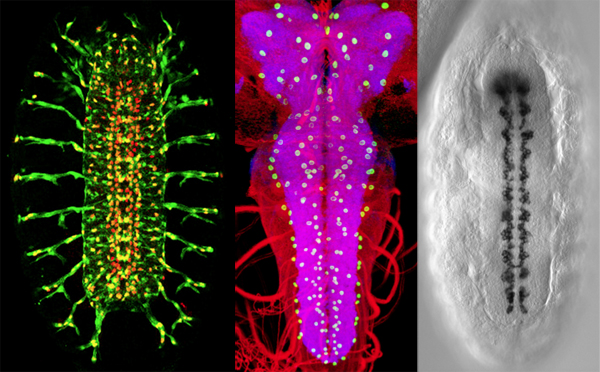About our lab
Neurons are not alone in the nervous system. Glial cells constitute the majority of the cells in the human brain. Despite their abundance, we know surprisingly little about how glia develop or function in the mature nervous system. Understanding glial cell biology and neuron-glia interactions has become an important line of investigation in contemporary neuroscience. Exciting recent work from the field has demonstrated central roles for this enigmatic cell type in neural circuit assembly, function, and plasticity. Moreover, glial cells appear to be primary responders to neuronal injury and neurodegenerative disease, but whether they are directly affected by disease, are responding to disease, or are in fact driving neuronal loss during disease remains unclear. Defining the precise roles that glia play will be a crucial step if we wish to understand how the nervous system is assembled, functions to drive animal behavior, and is maintained in a healthy state for the life of an animal.
Our group uses the fruit fly Drosophila as a model to explore fundamental aspects of glial cell biology. The major advantages of the fly are its remarkable collection of molecular-genetic tools for the analysis of gene function, the depth of our understanding of the development, histology and function of the Drosophila nervous system, and the opportunity this system presents to perform forward genetic screens to identify molecules required for glia-neuron interactions in vivo.
Employment opportunities
Postdoctoral Fellow
If you are interested in working on our projects as a postdoctoral fellow, please send your CV and names of three references to Marc Freeman via email.
Graduate Student Program
Graduate students can enter the Freeman lab via the Neuroscience Graduate Program.
Summer Research Opportunities
We usually have one or two summer students in the lab each year. If you are interested, contact Marc Freeman via email.
